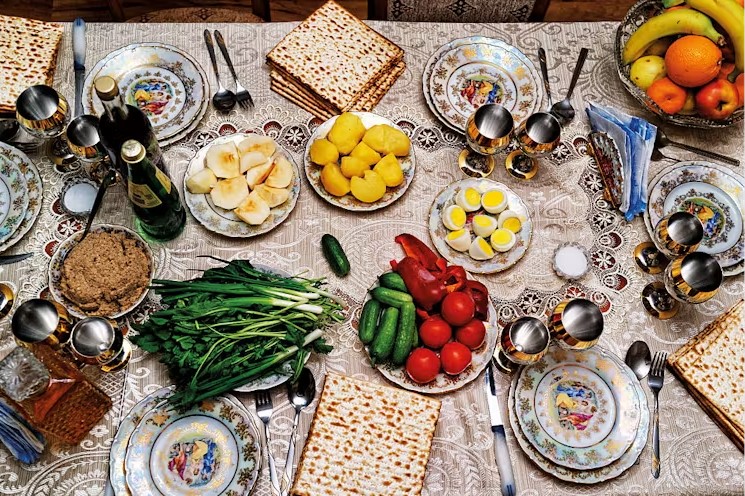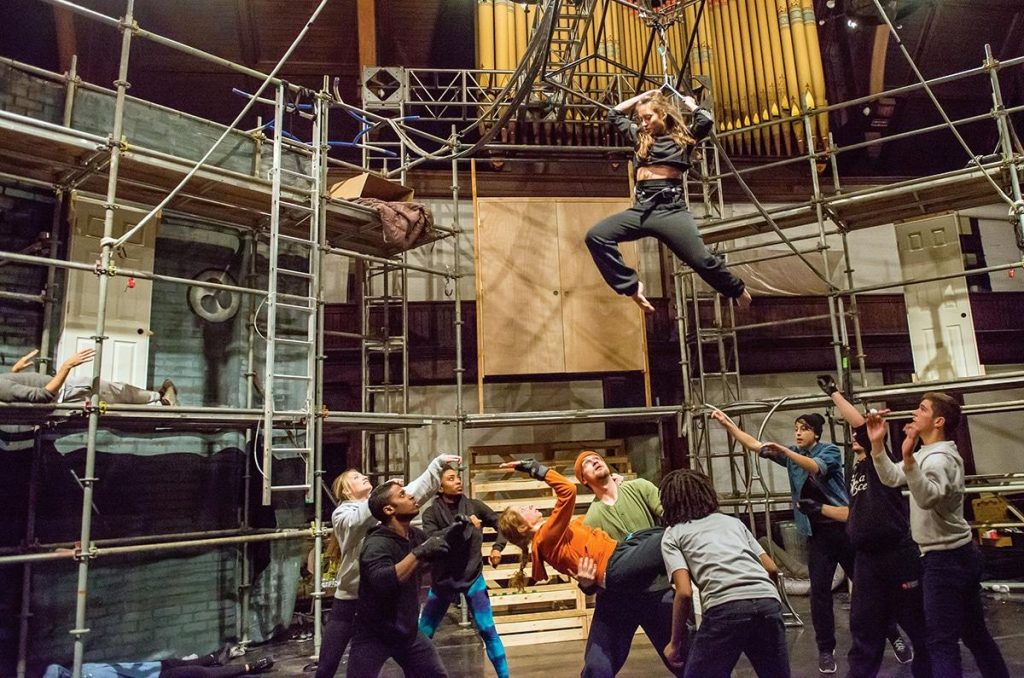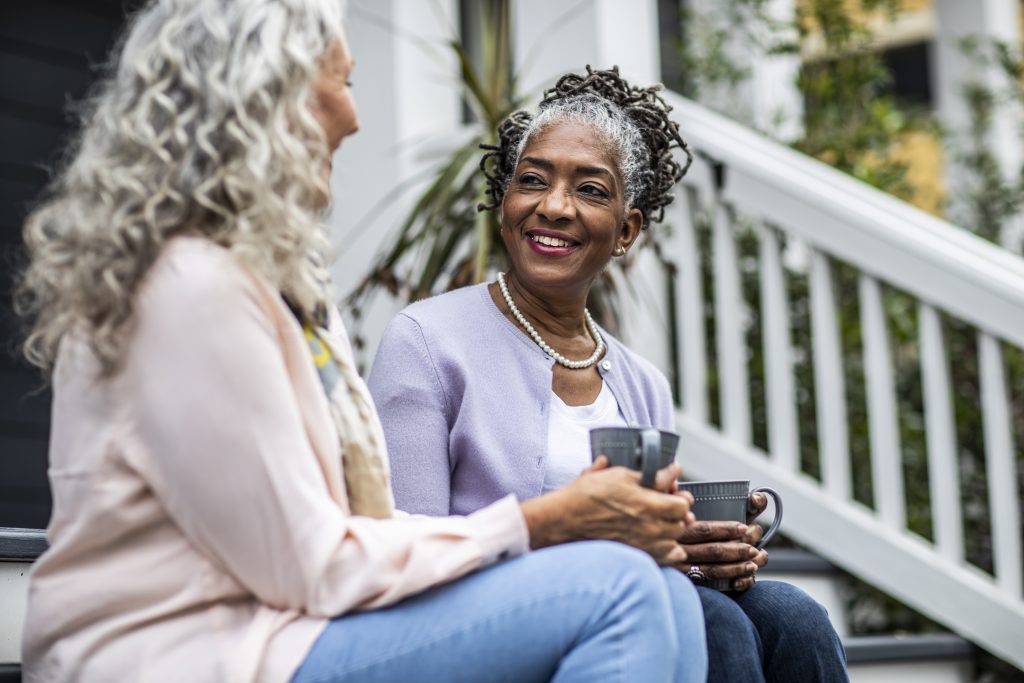In 2022, Dr. James Willis III walked away from Interfaith America’s Teaching Interfaith Understanding Seminar with a determined path: He would design a first-year seminar course that encourages students to reflect meaningfully on their beliefs and other religious commitments through an interfaith lens.
Willis, who’s an assistant professor of practice for religion at the University of Indianapolis, offered his class “Love, Death, and Religion” to the incoming class last fall. The class focused on five global religions – Hinduism, Christianity, Islam, Buddhism, and Judaism, along with an introduction to atheism and agnosticism – and each worldview was presented through the lenses of love and death. The idea was formed out of Willis’ belief that love and death are the two great questions of life, and he wanted to home in on the importance of blending storytelling in religion with individual lived experiences of his students.
As the 15-week class is nearing its end, two students from the class share their reflections with Interfaith America Magazine. The reflections have been edited for clarity and length.
Cassara Randall:
When I enrolled in the “Love, Death, and Religion” class at the University of Indianapolis last fall, I was skeptical, and perceived religion to be a little silly. “How can someone believe in a god and afterlife?” I thought, and I was dreading the class.
But after 15 weeks, I am walking away with a deeper understanding about religion. Exploring love and death through an interfaith lens taught me a valuable lesson about how faith offers people hope to cope with their grief.
It was hard to talk about death at first, but hearing other people’s perspectives made it easier over time to engage in these conversations. A profound moment for me was reading the book “Understanding Death” by Angela Sumegi for class, where the end of every section includes interviews with people of diverse faiths about how their religious beliefs help them cope with death. Suda and Harsha Dehejia, a married couple who practice Hinduism, said, “Death is not final; it is your body that leaves you … Whatever is born must die, whatever dies is reborn.” Mine Khan, a practitioner of Islam, said in her interview, “I know that when loved ones die, they go back to where they belong, to where they will be treated right.”
These reflections led me to have vulnerable conversations around death in my personal life. I spoke with my significant other’s grandfather, whose 80th birthday was soon approaching, and he shared how no man in his family has lived past 80.
Reading and discussing these perspectives gave me a better insight into how diverse religions approach life and death, and even non-religious people can apply those practices in their life.
I wondered how I would feel knowing that if I were in his place and asked him how he copes with it. As a “born-again Christian,” he believes there is a heaven he will go to. He believes that death isn’t the end of this life, but the beginning of the next one. That no one person can speak for all people who practice any religion, but all the people interviewed appear to find comfort in knowing that there is an afterlife. Whether their afterlife is rebirth or heaven, they believe there is something more than a void filled with nothing coming for them.
But how do people who don’t believe in an afterlife cope with death? In Sumegi’s book, Josée Posen, a follower of Judaism, said she takes comfort in the community and rituals like sitting Shivah. She said, “the focus for [her and her husband in their faith] is not so much on believing the right thing as doing the right thing.” Another interviewee, Izak Bouwer, who practices Buddhism, said, “Life is the preparation for death … There was a time when I was not here, then I was, and then again there will be a time when I am not here.” Christians and Muslims go on pilgrimages, give charity, and try to do good for their communities and please God.
Reading and discussing these perspectives gave me a better insight into how diverse religions approach life and death, and even non-religious people can apply those practices in their life. People from across faith traditions take comfort in knowing that they are doing the right thing and living a “good” life. Even when one doesn’t believe in an afterlife, they find a source of comfort in the way they live their lives.
I still don’t consider myself a religious person, but I found value and wisdom in parts of religions that had never crossed my mind to learn about. Religious or not, thinking about death through an interfaith lens can help you better grapple with the concept of death.
Ethan Lohman:
In my first-year seminar class “Love, Death and Religion,” Professor Willis encouraged me to bring myself out of my comfort zone. Before this class, I had truly little formal education about world religions; the only one I slightly knew was Christianity. Even with Christianity, there was still a gap in my knowledge, as I only knew the basics of “love God” and “love your neighbor.”
But through my digital service at a Reformed Jewish Synagogue, an in-person visit to an Orthodox Christian Church, along with the lessons I learned in class, I am now on a journey to better understand love, myself, and the world around me on a much bigger scale.
Before this class, I thought of love as a feeling. It is something that someone says, as in “I love this, I love that, I love you.” It was just that simple, nothing more than just words. But now I can say I am wrong about that. This class has taught me that love is an action, not just something one feels. Of course, one can use words to convey love, but without actions, the love seems absent. For example, we read the book “Religion Matters” by Stephen Prothero, who writes about Islamic prayers, “These prayers are spoken in Arabic, accompanied by a tight choreography of standing, sitting, kneeling, and prostrating.” This is how Muslims show their love to God through actions and words, and it made me realize the importance of actions that convey love.
Growing up, I was in a nondenominational church. The service usually began with a performance from a rock band. There were moments where the band wanted to hear the crowd sing their praise for God, so the band would go silent, but so would the congregation. It felt like there was no love within the people, just that they were going through the motions of going to church. I can say the same about myself. I stood there unafflicted, just mouthing the words that showed up on the screen, and I was just saying I loved God without any action to show for it.
The class inspired me to attend two services from diverse faiths. My views on love have grown deeper and more sincere in their use of demonstrating love as an action because of these interactions.
The first service I visited was at a Reformed Jewish Synagogue. It was a digital service, so I tuned in from my living room. When the service started, I soon realized it was a lot of singing. It was like nothing I have seen before. At my previous church, there were only ten minutes of singing at the start and end. With the digital service, I sadly could not experience what the congregation was like, as the live stream focused only on the rabbi and the cantor, but I could still see what love they gave through the actions of the rabbi and the cantor.
They lit the sabbath candle, asking the congregation to make peace with those around them. They carried the candle down the aisle to commemorate two people about to be married and share things happening in the community. There were many more actions, but the action that really spoke to me was the involvement inside the community. Involvement in a community is a loving trait. For the synagogue to organize a wedding for a couple is a loving action that affects everyone in the community.
It is amazing how exploring different religions can broaden one’s perspective. I have visited two different services and … learned so much about myself.
The next service I attended was in an Orthodox Christian Church.
When I walked in, they greeted me with a smile. I got goosebumps as I witnessed the entire congregation singing joyously together. Like the Synagogue service, there were no bands or instruments, just a cappella praise. They could tell I was a stranger, which made the subdeacon approach me quickly to explain that I could join them for fellowship hour to answer questions I might have. The subdeacon made sure that the person next to me would help me if I ever got stuck. Throughout the Divine Liturgy, I observed this man next to me, watching as he sang his love for God. He devoutly bowed, crossed his chest, and overall showed honor to God. But it wasn’t just him. Everyone at the congregation was showing their love for God. I could feel the crowd come alive, unlike the crowd in the church I attended as a child. Then, they all partook in the Holy Eucharist (communion), and they invited me once again for fellowship hour. The fellowship hour is a community lunch, where the congregation can connect with each other and continue to rejoice in their love for God. Later, the subdeacon approached me and answered all the questions I had, and we continued our discussion for another four hours after the service ended.
To me, this is love, because the people at the church could have done nothing at all. They could have just ignored me because I am not one of them. But they made me feel welcome and acted to do so, even if it meant talking with me for four hours. Their actions reflected the commandments of Christianity that I’ve always known they love their neighbor and God. They care for each other in any way needed. They profess their love for one another, pointing back to God and celebrating with God with their actions.
It is amazing how exploring different religions can broaden one’s perspective. I have visited two different services and have already learned so much about myself.
On reflection, I can say my view on love is not to say, but to do. This means taking charge of my actions and how they affect the surrounding people. I have learned that exploring life and death through an interfaith lens can be helpful in developing a person’s character. It allows you to see things from a unique perspective that you wouldn’t have considered before.




